Jorge Bosso - Brothers (2024)
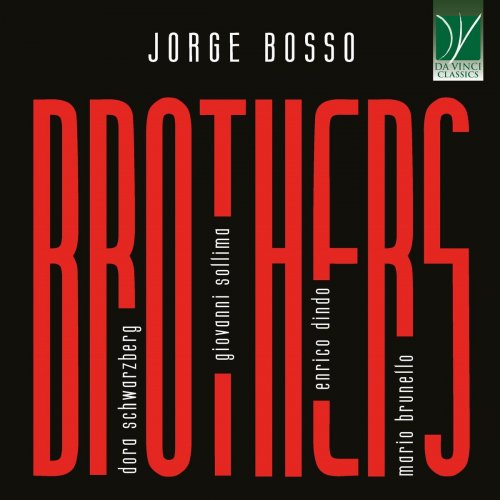
Artist: Jorge Bosso, Enrico Dindo, Giovanni Sollima, Kostantin Jakobson, Mario Brunello, Tebje Poem
Title: Brothers
Year Of Release: 2024
Label: Da Vinci Classics
Genre: Classical
Quality: FLAC (tracks)
Total Time: 75:09 min
Total Size: 369 MB
WebSite: Album Preview
Tracklist:Title: Brothers
Year Of Release: 2024
Label: Da Vinci Classics
Genre: Classical
Quality: FLAC (tracks)
Total Time: 75:09 min
Total Size: 369 MB
WebSite: Album Preview
01. Mon cher frère (For Cello Trio and 12 Cellos)
02. Der Frühling der Minnesänger (For Violin and Mixed Chorus after Johann Sebastian Bach's Partita No. 2)
03. Der Frühling der Minnesänger (For Violin and Mixed Chorus after Johann Sebastian Bach's Partita No. 2)
04. Der Frühling der Minnesänger (For Violin and Mixed Chorus after Johann Sebastian Bach's Partita No. 2)
05. Der Frühling der Minnesänger (For Violin and Mixed Chorus after Johann Sebastian Bach's Partita No. 2)
06. Der Frühling der Minnesänger (For Violin and Mixed Chorus after Johann Sebastian Bach's Partita No. 2)
07. Der Frühling der Minnesänger (For Violin and Mixed Chorus after Johann Sebastian Bach's Partita No. 2)
08. Der Frühling der Minnesänger (For Violin and Mixed Chorus after Johann Sebastian Bach's Partita No. 2)
09. Der Frühling der Minnesänger (For Violin and Mixed Chorus after Johann Sebastian Bach's Partita No. 2)
10. Der Frühling der Minnesänger (For Violin and Mixed Chorus after Johann Sebastian Bach's Partita No. 2)
11. Der Frühling der Minnesänger (For Violin and Mixed Chorus after Johann Sebastian Bach's Partita No. 2)
12. I Dreamt My Last Breath in Your Arms (For 12 Cellos)
13. Symphonia (For 12 Cellos)
14. Siamo lacrime nel fiume (For 8 Cellos)
For a long time, the Sonatas and Partitas for unaccompanied violin (as well as the Suites for unaccompanied cello) by Bach were deemed to be both unplayable and “un-hearable” in their original form. Unplayable, because of their utter technical difficulty; un-hearable, because they require an effort of the listener too. The violin, as is common knowledge, has four strings which are set to vibration by a bow. The strings lie on a bridge, which has a curved shape; for this reason, and since the bow can here be likened to a straight line, as a matter of principle it is impossible to play more than two notes together on the violin (using the bow), since a straight line (the bow) cannot touch three non-aligned points at the same time. In practice, a particular technique of bowing allows, under certain conditions, also to produce three notes with one stroke of the bow (this effect is employed, for instance, in the Concerto by Brahms). However, this is rather exceptional; similarly exceptional are other techniques such as pizzicato playing, or left-hand pizzicato with bowing etc.
Generally, therefore, for most composers the main use of the violin is as a melodic instrument; this does not preclude, of course, the employ of double-stops or of passages (such as arpeggio or other virtuoso figurations) in which the melodic component is minimal or missing. Still, the violin is normally not conceived as a harmonic instrument, let alone as a polyphonic instrument. In spite of this, several great composers throughout music history have sought to challenge the “natural” limits of this instrument and to consider it as a creator of harmony and polyphony. And Johann Sebastian Bach, even if he was not the first to do so, still remains one of the undisputed masters whose genius-like foresight has led the violin on previously unconceivable paths.
In his Sonatas and Partitas, he employs a skill of the human mind which is better known in the visual field than in the aural, but which exists in, and applies to both. It frequently happens that we see, for instance, a partially effaced word or sentence, and are still able to make sense of it, to complete what is missing – at time without even realizing what we are doing. Or we may see just a part of a known object, and still recognize it. Our mind completes logically what is missing. It does the same with music: when a harmony is incomplete, or a polyphony is broken, within certain limits we are able to supply the missing notes, and to perceive it as a satisfactory and complete unity. Thus, even though Bach cannot require of the violin to produce a fully-fledged, entirely complete polyphonic texture, the effect (in the hand of a master violinist, of course) lacks nothing.
True, in the past, some composers sought to complement Bach’s “incomplete” harmonies and wrote piano accompaniment to the Sonatas and Partitas: and this was done by masters of the calibre of Felix Mendelssohn and Robert Schumann, who certainly were among the most acute appreciators of Bach at the time of his rediscovery by the Romantics. Their attitude was, thus, one aiming at “adding” what was seemingly “missing”: a need which today is not felt. Now that Bach’s works for unaccompanied violin have become an integral part of the concert repertoire and of the educational curriculum, contemporary listeners are perfectly satisfied with what is found in Bach’s notes, and do not perceive these masterpieces as lacking anything.
It is not, therefore, for a “need”, but just for pleasure, for the stimuli of artistic creativity, that even some artists of today’s world have decided to intervene on the essential (and still extreme) texture of Bach’s originals. Ferruccio Busoni, who died exactly a hundred years ago, famously transcribed the Chaconne for the piano, but with the lens of an imaginary organ version: his piano transcription was not the direct arrangement of the violin original, but rather the adaptation of an organ work (never written) derived from the Chaconne.
This was bearing witness to a number of elements: the Chaconne’s immense difficulty and its transcendent character; but also its “spirituality”, evoked by the organ, the liturgical instrument par excellence in our Western world.
It is with a somewhat similar spirit that Jorge Bosso created his own version of the entire Second Partita for unaccompanied violin, providing it with a choral framework. The work was premiered on June 5th, 2009, at the Philharmonic Hall of Petrozavodsk, Republic of Karelia, Russia, with legendary violinist Dora Schwarzberg and the Conservatory Choir of Petrozadovsk prepared by Evgeny Gureev and conducted by Alexander Skulsky.
It was one of the many concerts and collaborations between Bosso and Russian music institutions: “I worked a lot there, and frequently with choirs: I love writing for choirs”, narrates Bosso. “In the first part of the concert there was Der Frühling der Minnesänger [the piece recorded here], whilst in the second part I had orchestrated the piano part of Richard Strauss’ violin Sonata employing the same instrumentation used by Strauss himself in the Don Juan”. Strauss’ symphonic poem is in effect close, in terms of period of composition, to the Sonata, and Bosso took care of attentively studying Strauss’ technique of orchestration. The encore of that concert was an orchestral version of Wagner’s Albumblatt, which had originally been arranged for violin and piano by August Wilhelmj, the erstwhile concertmaster of the Bayreuth orchestra. “For me, therefore, the complete project includes Der Frühling der Minnesänger, the Strauss Sonata and Wagner’s Albumblatt. Even though Der Frühling is perfectly autonomous and self-standing as it is”, explains Bosso, “for me it lacks something when it is performed alone. The itinerary of that concert was, in my mind, a celebration of tradition. The Strauss Sonata, in fact, incorporates a literal (albeit hidden) citation of a Beethoven Sonata”. Der Frühling was later performed at the famous Lugano festival whose artistic direction was, at the time, entrusted to Martha Argerich; even then, however, Bosso felt that the performance was somewhat incomplete without the other pieces going along with his version of the Bach Partita. “I am all in favour of the ‘concept-concert’”, laughs Bosso. “In the Seventies, rock musicians issued ‘concept albums’; I dream of ‘concept-concerts’, and I like this more than simply writing an isolated piece. I think all composers dream of this”.
Bosso’s “celebration of tradition” represented by his “concept-concert” is his interpretation and realization of a dictum by Dmitri Shostakovich, who once wrote, in an open letter to composers: “By building bridges into the future we must take care not to burn the bridges connecting today’s culture to its immortal past”.
The links between today and the past are not only found in Bosso’s (musical) dialogue with Bach, but also in the lyrics sung by the choir and in other musical and literary references disseminated throughout the work. Bosso sees his dialogue with such a “monument” of music as Bach’s work as something establishing a meaningful relationship: “The word monument comes from Latin verb “monĕre” that means to evoke, to remember, to celebrate. This is the meaning and the etymology of monument. A monument includes always a tie. A monument carries in itself a commitment. A monument implies a responsibility with the past of a society and at the same time an obligation towards the future”.
Bosso’s Der Frühling der Minnesänger thus makes an explicit reference to the world of the courteous love sung by the German troubadours, the Minnesänger, and particularly by the greatest of them, Walter von der Vogelweide. “They wrote love poetry, in the courtly love tradition in Middle High German, during the High Middle Ages. The concept of Love in its utmost expression. The Minnedienst. The service of Love. The aim of the Minne was the elevation of the spirit, and the representation of this spiritual act was the image of the frouwe, the lady. It was a symbol, an emblem, an icon. The representation on the earth of this metaphysical tendency of the human being towards the time without end”.
The choir part added by Bosso to the four dances is in strict Baroque-like counterpoint, with lyrics of the Minnesänger and from the epic poem Der Nibelüngen. There are also four short intermezzi, with lyrics from Vogelweide’s Unter den Linden, and written in a musical style “closer to the School of Notre Dame, Leoninus and Perotinus, and the Symphonies of Hildegard von Bingen”. The Chaconne, by way of contrast, “was treated in a different and more abstract way, as regards the musical aspect itself. The lyrics belong to Paolo Diacono (the hymn Ut queant laxis), Giordano Bruno (De Magia Mathematica), Hildegard von Bingen and the Genesis”.
This album also features Mon cher frère (“My dear brother”), whose allusion to brotherhood also determines the title of this album. Mon cher frère is an important part of a large-scale work (Brothers), for a-cappella mixed choir and cellos, for which Bosso cooperated with three of the greatest Italian cellists, i.e. Enrico Dindo, Mario Brunello, and Giovanni Sollima. Brothers was inspired by the correspondence between the two Van Gogh siblings, Theo and Vincent: “It is a beautiful epistolary”, says Bosso, “entirely available, with notes, on the website of the Van Gogh Museum. Vincent was a voracious reader: he even knew Whitman and he advised Theo’s wife to read his works! However, Vincent’s impressive literary culture was seemingly unmatched by his knowledge in the musical field: I never happened to read anything written by him about music!”.
Also Symphonia originally belonged in a larger work. It is an arrangement for twelve cellos of the Agnus Dei and Communio excerpted from Bosso’s Requiem. “I had written the Requiem in 2004, to commemorate the tenth anniversary of my mother’s death. It was for male a-cappella choir and solo cello, and it had been premiered on June 8th, 2004”, recalls Bosso.
The album is completed by We are Tears in the River (after Heraclitus) – the piece is for eight cellos, all recorded by Bosso himself with the technique of overdubbing – and by I Dreamt My Last Breath in Your Arms, a piece Bosso had conceived in combination with visual art.
Chiara Bertoglio
Generally, therefore, for most composers the main use of the violin is as a melodic instrument; this does not preclude, of course, the employ of double-stops or of passages (such as arpeggio or other virtuoso figurations) in which the melodic component is minimal or missing. Still, the violin is normally not conceived as a harmonic instrument, let alone as a polyphonic instrument. In spite of this, several great composers throughout music history have sought to challenge the “natural” limits of this instrument and to consider it as a creator of harmony and polyphony. And Johann Sebastian Bach, even if he was not the first to do so, still remains one of the undisputed masters whose genius-like foresight has led the violin on previously unconceivable paths.
In his Sonatas and Partitas, he employs a skill of the human mind which is better known in the visual field than in the aural, but which exists in, and applies to both. It frequently happens that we see, for instance, a partially effaced word or sentence, and are still able to make sense of it, to complete what is missing – at time without even realizing what we are doing. Or we may see just a part of a known object, and still recognize it. Our mind completes logically what is missing. It does the same with music: when a harmony is incomplete, or a polyphony is broken, within certain limits we are able to supply the missing notes, and to perceive it as a satisfactory and complete unity. Thus, even though Bach cannot require of the violin to produce a fully-fledged, entirely complete polyphonic texture, the effect (in the hand of a master violinist, of course) lacks nothing.
True, in the past, some composers sought to complement Bach’s “incomplete” harmonies and wrote piano accompaniment to the Sonatas and Partitas: and this was done by masters of the calibre of Felix Mendelssohn and Robert Schumann, who certainly were among the most acute appreciators of Bach at the time of his rediscovery by the Romantics. Their attitude was, thus, one aiming at “adding” what was seemingly “missing”: a need which today is not felt. Now that Bach’s works for unaccompanied violin have become an integral part of the concert repertoire and of the educational curriculum, contemporary listeners are perfectly satisfied with what is found in Bach’s notes, and do not perceive these masterpieces as lacking anything.
It is not, therefore, for a “need”, but just for pleasure, for the stimuli of artistic creativity, that even some artists of today’s world have decided to intervene on the essential (and still extreme) texture of Bach’s originals. Ferruccio Busoni, who died exactly a hundred years ago, famously transcribed the Chaconne for the piano, but with the lens of an imaginary organ version: his piano transcription was not the direct arrangement of the violin original, but rather the adaptation of an organ work (never written) derived from the Chaconne.
This was bearing witness to a number of elements: the Chaconne’s immense difficulty and its transcendent character; but also its “spirituality”, evoked by the organ, the liturgical instrument par excellence in our Western world.
It is with a somewhat similar spirit that Jorge Bosso created his own version of the entire Second Partita for unaccompanied violin, providing it with a choral framework. The work was premiered on June 5th, 2009, at the Philharmonic Hall of Petrozavodsk, Republic of Karelia, Russia, with legendary violinist Dora Schwarzberg and the Conservatory Choir of Petrozadovsk prepared by Evgeny Gureev and conducted by Alexander Skulsky.
It was one of the many concerts and collaborations between Bosso and Russian music institutions: “I worked a lot there, and frequently with choirs: I love writing for choirs”, narrates Bosso. “In the first part of the concert there was Der Frühling der Minnesänger [the piece recorded here], whilst in the second part I had orchestrated the piano part of Richard Strauss’ violin Sonata employing the same instrumentation used by Strauss himself in the Don Juan”. Strauss’ symphonic poem is in effect close, in terms of period of composition, to the Sonata, and Bosso took care of attentively studying Strauss’ technique of orchestration. The encore of that concert was an orchestral version of Wagner’s Albumblatt, which had originally been arranged for violin and piano by August Wilhelmj, the erstwhile concertmaster of the Bayreuth orchestra. “For me, therefore, the complete project includes Der Frühling der Minnesänger, the Strauss Sonata and Wagner’s Albumblatt. Even though Der Frühling is perfectly autonomous and self-standing as it is”, explains Bosso, “for me it lacks something when it is performed alone. The itinerary of that concert was, in my mind, a celebration of tradition. The Strauss Sonata, in fact, incorporates a literal (albeit hidden) citation of a Beethoven Sonata”. Der Frühling was later performed at the famous Lugano festival whose artistic direction was, at the time, entrusted to Martha Argerich; even then, however, Bosso felt that the performance was somewhat incomplete without the other pieces going along with his version of the Bach Partita. “I am all in favour of the ‘concept-concert’”, laughs Bosso. “In the Seventies, rock musicians issued ‘concept albums’; I dream of ‘concept-concerts’, and I like this more than simply writing an isolated piece. I think all composers dream of this”.
Bosso’s “celebration of tradition” represented by his “concept-concert” is his interpretation and realization of a dictum by Dmitri Shostakovich, who once wrote, in an open letter to composers: “By building bridges into the future we must take care not to burn the bridges connecting today’s culture to its immortal past”.
The links between today and the past are not only found in Bosso’s (musical) dialogue with Bach, but also in the lyrics sung by the choir and in other musical and literary references disseminated throughout the work. Bosso sees his dialogue with such a “monument” of music as Bach’s work as something establishing a meaningful relationship: “The word monument comes from Latin verb “monĕre” that means to evoke, to remember, to celebrate. This is the meaning and the etymology of monument. A monument includes always a tie. A monument carries in itself a commitment. A monument implies a responsibility with the past of a society and at the same time an obligation towards the future”.
Bosso’s Der Frühling der Minnesänger thus makes an explicit reference to the world of the courteous love sung by the German troubadours, the Minnesänger, and particularly by the greatest of them, Walter von der Vogelweide. “They wrote love poetry, in the courtly love tradition in Middle High German, during the High Middle Ages. The concept of Love in its utmost expression. The Minnedienst. The service of Love. The aim of the Minne was the elevation of the spirit, and the representation of this spiritual act was the image of the frouwe, the lady. It was a symbol, an emblem, an icon. The representation on the earth of this metaphysical tendency of the human being towards the time without end”.
The choir part added by Bosso to the four dances is in strict Baroque-like counterpoint, with lyrics of the Minnesänger and from the epic poem Der Nibelüngen. There are also four short intermezzi, with lyrics from Vogelweide’s Unter den Linden, and written in a musical style “closer to the School of Notre Dame, Leoninus and Perotinus, and the Symphonies of Hildegard von Bingen”. The Chaconne, by way of contrast, “was treated in a different and more abstract way, as regards the musical aspect itself. The lyrics belong to Paolo Diacono (the hymn Ut queant laxis), Giordano Bruno (De Magia Mathematica), Hildegard von Bingen and the Genesis”.
This album also features Mon cher frère (“My dear brother”), whose allusion to brotherhood also determines the title of this album. Mon cher frère is an important part of a large-scale work (Brothers), for a-cappella mixed choir and cellos, for which Bosso cooperated with three of the greatest Italian cellists, i.e. Enrico Dindo, Mario Brunello, and Giovanni Sollima. Brothers was inspired by the correspondence between the two Van Gogh siblings, Theo and Vincent: “It is a beautiful epistolary”, says Bosso, “entirely available, with notes, on the website of the Van Gogh Museum. Vincent was a voracious reader: he even knew Whitman and he advised Theo’s wife to read his works! However, Vincent’s impressive literary culture was seemingly unmatched by his knowledge in the musical field: I never happened to read anything written by him about music!”.
Also Symphonia originally belonged in a larger work. It is an arrangement for twelve cellos of the Agnus Dei and Communio excerpted from Bosso’s Requiem. “I had written the Requiem in 2004, to commemorate the tenth anniversary of my mother’s death. It was for male a-cappella choir and solo cello, and it had been premiered on June 8th, 2004”, recalls Bosso.
The album is completed by We are Tears in the River (after Heraclitus) – the piece is for eight cellos, all recorded by Bosso himself with the technique of overdubbing – and by I Dreamt My Last Breath in Your Arms, a piece Bosso had conceived in combination with visual art.
Chiara Bertoglio
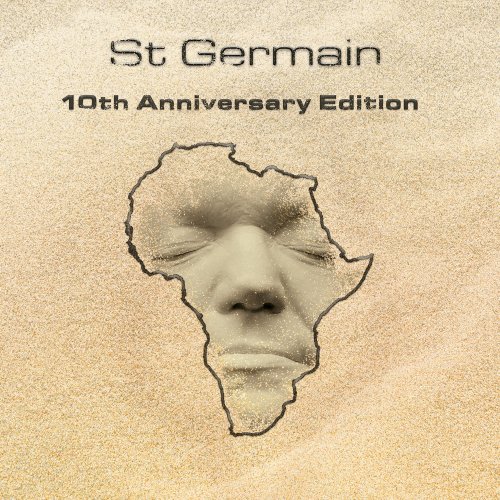
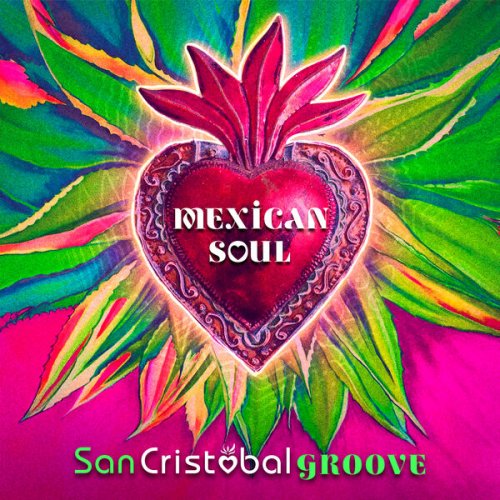
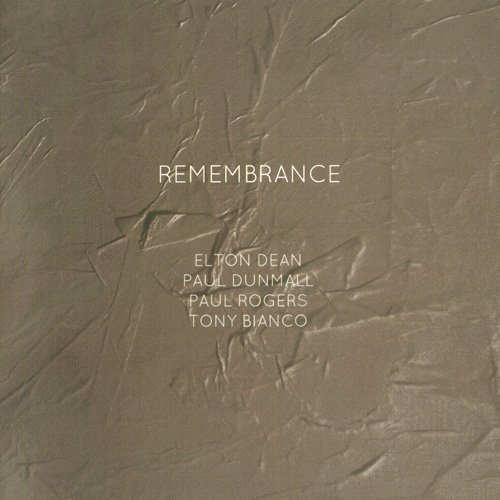
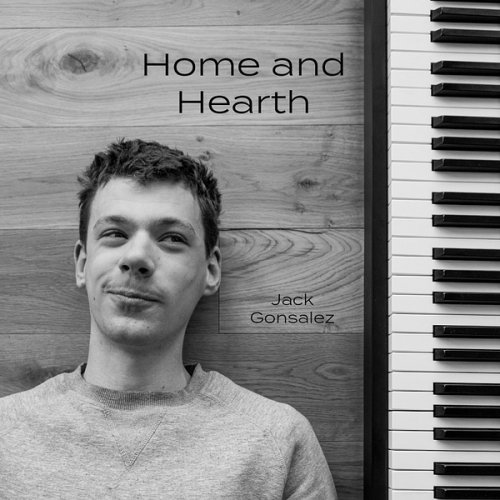
![Eyal Talmudi - Sonolodge III (2025) [Hi-Res] Eyal Talmudi - Sonolodge III (2025) [Hi-Res]](https://www.dibpic.com/uploads/posts/2025-12/1765452900_lx0qd5oe5d27jughu8ket317s.jpg)
![Keith Oxman - Home (2025) [Hi-Res] Keith Oxman - Home (2025) [Hi-Res]](https://www.dibpic.com/uploads/posts/2025-12/1765387688_hltlbo3s1g1aa_600.jpg)
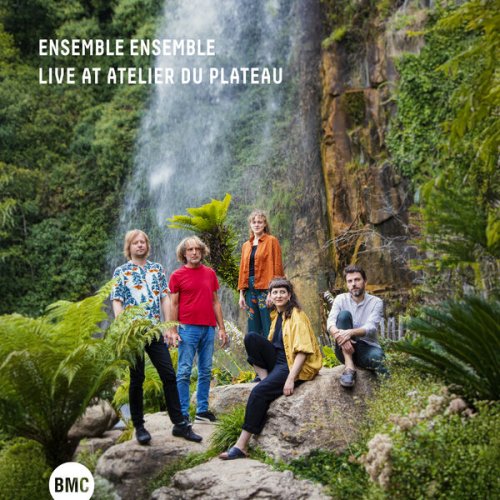
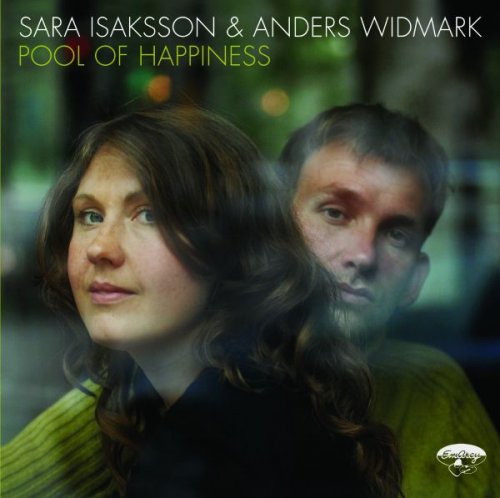
![Marvin J. Galaxy - The Valley of Dreams (2025) [Hi-Res] Marvin J. Galaxy - The Valley of Dreams (2025) [Hi-Res]](https://www.dibpic.com/uploads/posts/2025-12/1765272548_lujas0h3bmwkg_600.jpg)